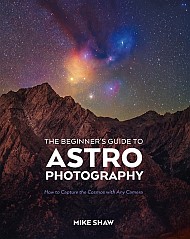Astronomy
Observing the Dark Ages of the Universe from the Far Side of the Moon
Shortly after the Big Bang, after the CMB was released, there was a time that's tricky to observe called Cosmic Dark Ages. Clouds of hydrogen could be detected at that time using a specific frequency of radio waves, but Earth's radiation introduces too much noise. Researchers are proposing a CubeSat called Cosmo Cube that could orbit the Moon, observing when it's in the quiet radio shadow cast by the Moon. It could help detect the first structures coming together, leading to the formation of the first galaxies.
Most warming this century may be due to air pollution cuts
Most warming this century may be due to air pollution cuts
Weight Stigma Persists for Some Patients after Bariatric Surgery
While bariatric surgery can result in significant weight loss, weight stigma can persist years after the surgery.
Gravitational waves reveal most massive black hole merger ever detected — one 'forbidden' by current models
You can’t judge a star by its protoplanetary disc
This image tells the story of redemption for one lonely star. The young star MP Mus (PDS 66) was thought to be all alone in the Universe, surrounded by nothing but a featureless band of gas and dust called a protoplanetary disc. In most cases, the material inside a protoplanetary disc condenses to form new planets around the star, leaving large gaps where the gas and dust used to be. These features are seen in almost every disc – but not in MP Mus’s.
When astronomers first observed it with the Atacama Large Millimeter/submillimeter Array (ALMA), they saw a smooth, planet-free disc, shown here in the right image. The team, led by Álvaro Ribas, an astronomer at the University of Cambridge, UK, gave this star another chance and re-observed it with ALMA at longer wavelengths that peer even deeper into the protoplanetary disc than before. These new observations, shown in the left image, revealed a gap and a ring that had been obscured in previous observations, suggesting that MP Mus might have company after all.
Meanwhile, another piece of the puzzle was being revealed in Germany as Miguel Vioque, an astronomer at the European Southern Observatory, studied this same star with the European Space Agency’s (ESA’s) Gaia mission. Vioque noticed something suspicious – the star was wobbling. A bit of gravitational detective work, together with insights from the new disc structures revealed by ALMA, showed that this motion could be explained by the presence of a gas giant exoplanet.
Both teams presented their joint results in a new paper published in Nature Astronomy. In what they describe as “a beautiful merging of two groups approaching the same object from different angles”, they show that MP Mus isn’t so boring after all.
[Image description: This is an observation from the ALMA telescope, showing two versions (side-by-side) of a protoplanetary disc. Both discs are bright, glowing yellow-orange objects with a diffused halo against a dark background. The right disc is more smooth and blurry looking. The left disc shows more detail, for example gaps and rings within it.]
LIGO has spotted the most massive black hole collision ever detected
LIGO has spotted the most massive black hole collision ever detected
Private Ax-4 astronauts heading back to Earth early July 14: Watch it live
'Pebble' beaches around young stars join together to form planets
Experts ask where the center of the universe is
Feast your eyes on the shortlisted pics for the 2025 ZWO Astronomy Photographer of the Year Awards (photos)
Earth may have at least 6 'minimoons' at any given time. Where do they come from?
SpaceX launches mystery satellite to geostationary transfer orbit (video)
Binary Stars Out of Sync: One Hosts a Giant Planet, While its Companion is Still Forming Planet
A team of international researchers led by Tomas Stolker in the Netherlands has imaged a young gas giant exoplanet near a 12-million-year-old star. The planet is orbiting a star whose planet formation has finished, while a same-aged companion star in this double star system still has a planet-forming disk.
Breakthrough Listen Releases Results for 27 Eclipsing Exoplanets
In a recent study, a team of astronomers examined 27 confirmed and candidate exoplanets identified by TESS for signs of radio transmissions during star-planet occultations. The purpose was to see if radio signals from these targets of interest (TOIs) were interrupted as they passed behind their stars, thereby indicating that they were artificial in origin.
Where Does Cosmic Dust Come From? The JWST Provides an Answer
Cosmic dust does far more than float through space. It's the raw material from which stars, planets and possibly even life emerge. Yet astronomers have long puzzled over where this vast amount of dust comes from and what it's made of.


